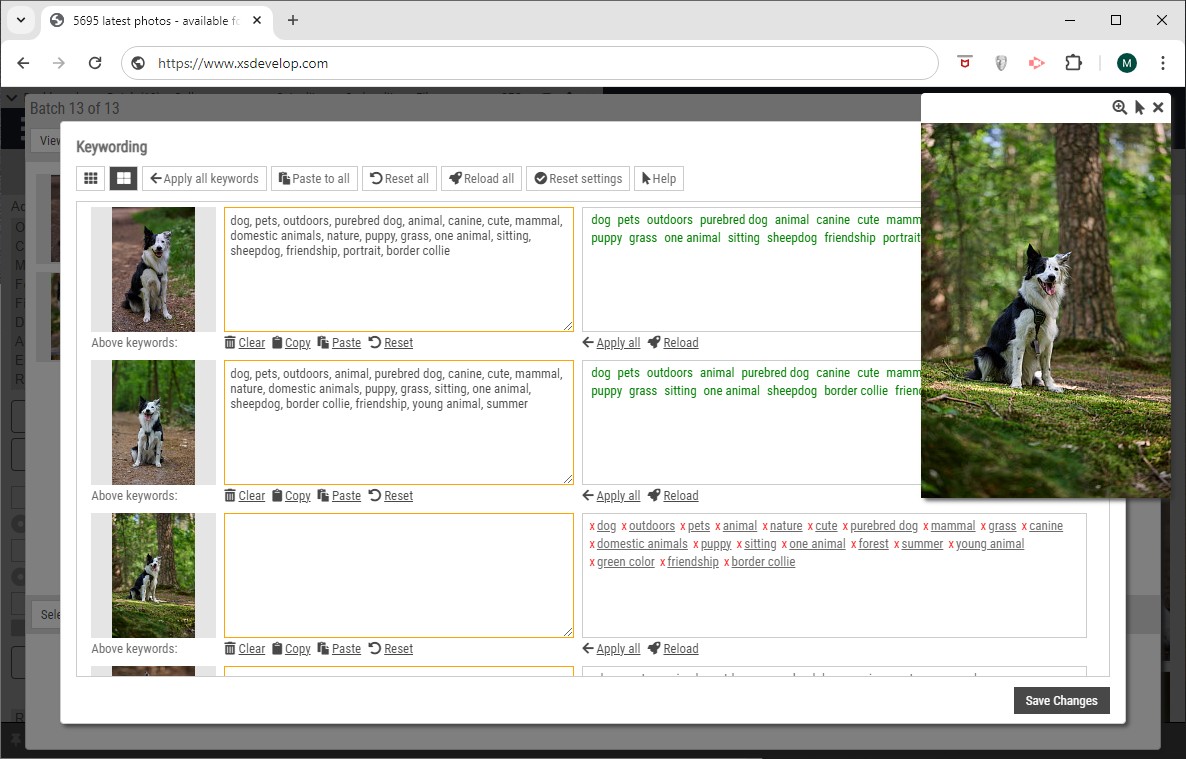The cart page is one of the more complex pages because it has to take many possible conditions into account. I.e. what the cart page looks like depends on the user’s permissions – e.g. the user may have immediate download permissions, the user may be required to pay online to acquire permissions et cetera. But also on the files in the cart. There may be both RF and RM files in there, both images and video, there may be blocked files, restricted files, unavailable files and so on.
Normally it is recommended that you leave the cart page as it is. You can change the texts that are displayed with a number of settings in Back office. And if you just want to change certain labels, then you can edit the constants files without having to make a custom cart page. You can configure the standard cart page in Back office, which is explained in Configuring the cart page.
If you do need further customisation than what can be achieved with the normal settings, CSS and script – then you can make a custom cart page. That is to say, you can change the top fragment and the bottom fragment of the page. This requires certain skills and we recommend that you read these articles first: Using the code editor, Infradox XS customisation, Using custom CSS.
Important
- The script that is used for the cart page requires certain HTML elements with specific ID’s and class names to be present. If you rename or remove those elements, you may cause script errors that will cause the cart page to fail.
- Use proper indentation to make sure that the code is easy to read. If not, we may not be able to offer support if there are problems.
- XS Conditions can be nested. Failure to properly balance a condition block can cause severe problems.
Localisation
The default code fragments use locale conditions, and specific tags to display text in the selected language on the client facing pages. If you want to use English only, then you can remove the code you don’t need. It is however still recommended to use constants and repository values wherever possible, so that you can change certain values in a single place only without having to edit the templates again.
For example
outputs the label that has been configured in backoffice and in the language that is selected by the end user.
outputs the value that is in the orders constants file and in the selected language. Constants can be changed in Site configuration.
outputs either text 1 or 2 depending on the select language on the client facing pages.
Testing
If you have made only minor / textual changes, then minimal testing will be required. If however you have made further going changes, then proper testing is an absolute requirement. You should test the Cart page under all possible conditions. E.g. as a user that has to pay online, as a user that has immediate download permissions, as a user that doesn’t have immediate download permissions, with files of all media types that you have, with files with different rights (RM/RF), with files with and without restrictions – and every other possible combination of parameters.
Loading the standard code for the top of the page
In the code editor, select Cart top of page in the dropdown at the top of the editor. Then click Load example on the left of the dropdown. Select the template in the dialog and click the Use code button. The default code will load into the editor. The default code has a number of XS conditions and several of those conditions are nested – which means that all conditions must be true for the final code to be part of the generated HTML page. For example:
This particular condition means that when the cart page loads, the code that is between
<?xs if not order(‘details’) { and } ?>
is the code that will be part of the page if the cart has no details (i.e. it is empty). Note that all condition blocks must be closed with } ?>.
Have a look at the following block of nested conditions and the explaining text (which you won’t see in the actual code in the editor):
Other conditions and tags used in this page fragment:
order(‘rm’)
the cart contains only RM files
user(‘pricecalc’)
the price calculator for RM images is enabled on the user’s account
user(‘pricecalc1’)
the price calculator is enabled with prices
user(‘pricecalc2’)
the price calculator is enabled without prices
<?xs orderprop(‘usr_displayname’) ?>
the user’s display name as stored in the order
<?xs orderprop(‘usr_bemail’) ?>
the user’s business e-mail address as stored in the order
When you are done, click the Enable checkbox and click on Save at the top of the page.
If you want to revert to the standard code then uncheck the Enable checkbox and click Save.
Loading the standard code for the bottom of the cart page
In the dropdown at the top of the code editor, select Cart finalize. Next click on the Load example button to load the provided code fragment for the bottom of the cart page.
The code fragment for the bottom of the cart page includes or excludes specific HTML depending on the user’s permissions, any problems with the files in the cart and so on. This code is essential – among other things – for online payments.
Below are the most important conditions that you’ll find in the code:
Note that some of the conditions use NOT. E.g.
<?xs if not order(‘allfilesavailable’) { output this if not all files are available } ?>
When you are done making changes, check the Enable checkbox and save the code. If you run into problems, uncheck the Enable checkbox and save your code again. After this the standard XS template will be used.



